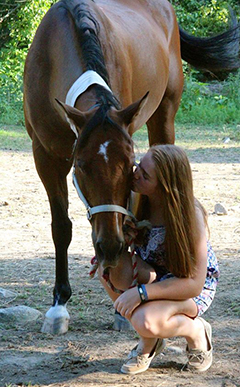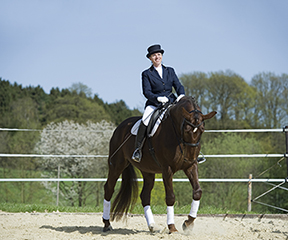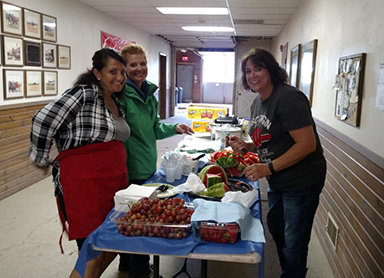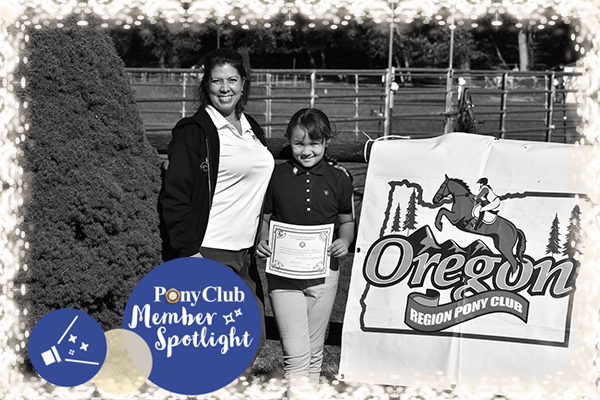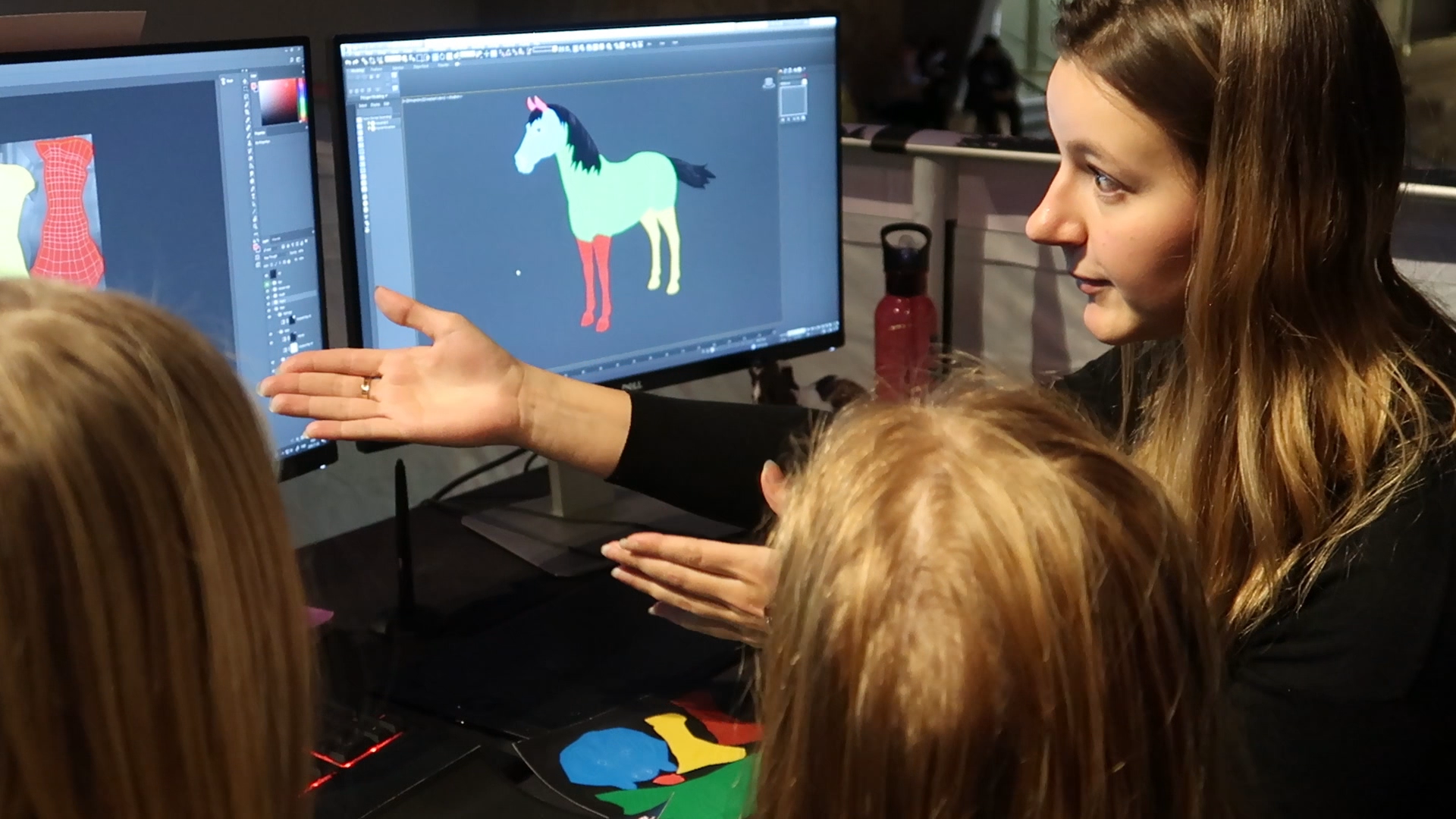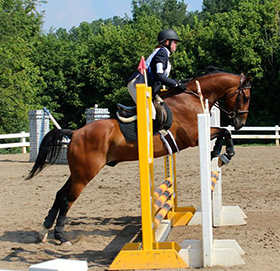
Flash Award Winner- Tuck Everlasting

Aly Werth, C-1 Traditional, C-2 Flat member of Hybid Farm Pony Club Riding Center in the Central New England Region sent in her Flash Award submissions about a couple of fantastic horses from her riding center. Her story about Tuck Everlasting “Tucker” was the winner of the Flash Award. Read along as Aly shares Tucker’s story:
I can distinctly remember learning my toxic plants before my H-B certification in 2011. I remember running through ways to identify them and the problems they caused over and over again in my head. I also remember thinking that they didn’t seem very consequential, especially next to all the other things you are tested on at the H-B..lamenesses, tack, etc.. all things that seemed more relevant to my horsie life. I couldn’t have been more wrong.

I’ve never been someone who believed in miracles. I was raised to believe in facts, statistics…things you can measure, touch, and see. In the summer of 2015 something happened that made me reconsider (both my nonchalant regard for toxic plants and my belief in miracles). A couple weeks after returning from Championships in Virginia there was a big storm with strong winds, trees down, and lots of rain. One day later I got a text saying that one of our beloved ponies, Star was showing symptoms of red maple poisoning because of branches down and blown around in the paddock during the storm. Despite immediate vet attention we lost Star just two days later when the toxins proved to be too much to her system. With the pasture having already been closely inspected to ensure that no trace of red maple remained, it seemed like a time to pull together as a riding center and community and mourn the loss of much loved pony. Unfortunately, that same day Tucker (a 19 year old Quarter Horse gelding fresh off his return from Show Jumping Championships) started showing symptoms. The vet credited the slow development of symptoms to a lower dose, but as the statistics for red maple show, any horse that shows symptoms at all is facing steep odds to recovery.
Treatment started immediately, IV fluid bags changed every 5 hours, TPR checks every 2 hours, banamine when the fever spiked, urine samples, vet checks, etc. For a small barn such an extensive treatment plan is a big undertaking. Our close knit community pulled together in a way that still shocks even me, a person that grew up in the close knit, friendly and supportive environment that is Hybid. Each night groups of 3-5 people volunteered and slept in the barn, taking shifts to keep up with the treatment through the night, never leaving anyone alone. During the day our Horsemanship Summer Camp ran with many of the members of the night shifts working as usual as counselors to provide the younger students with a good experience despite the severity of our situation. At least one person was with Tucker around the clock.
Despite the extraordinary effort and around the clock care Tucker’s condition worsened. Tests showed that his red blood cell count (normal levels around 45%) was dropping as the toxins attacked his red blood cells. When his red blood cell level reached a low of 9% concern over his ability to transport oxygen to his organs and kidney functionality arose. In order to survive red maple a horse must retain enough red blood cells despite the toxins to keep them alive while the body recovers until they start producing their red blood cells again. With numbers around 9% there was a big concern that if they dropped any further he could go into systemic organ failure before his body had a chance to recover and produce it’s own red blood cells.
Families of members of our riding center and lesson program chipped in to help pay for the mounting veterinary expenses. Tuckers group of volunteers continued to stay with him around the clock providing care. There was a long shot option of trying a blood transfusion to buy him time, hopefully enough for his body to start working again, but it was expensive and risky due to the large amount of blood types found in horses. The first transfusion was done using another horse from the barn with many members of his support team present to help in any way possible. Unfortunately, Tucker had a reaction to the blood as it turned out to be not a close enough match.
Several tense hours later he stabilized, the final remaining option being a blood typing and verified match blood transfusion from Tufts veterinary hospital. The family of Tucker’s rider from Championships decided to pay for his blood typing, the blood from tufts, and a second transfusion. With Tuft’s lab closing for the weekend and the lagging red blood cell levels two older members of our center rushed off to Tufts with blood samples to get typed and cross matched so they could return with matching blood from Tuft’s donor herd. That night Tucker had his second transfusion. Members of his team continued to stay with him and each other throughout the night to monitor his condition and continue treatment. The next round of tests showed his red blood cells higher, putting him in a less risky position. Now all we could do was keep monitoring him, keep him on IV, and cross our fingers that he would start producing his own cells. Several tense test results later we finally had good news. His levels were increasing, his body was working again! With time it seemed like everything was going to be ok.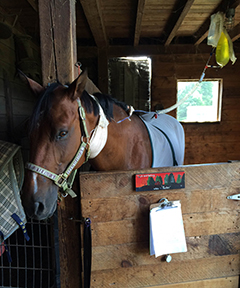
It probably seems like this is the end of my story but it isn’t. The medical care for Tucker and Star totaled up to be many thousands of dollars, even with the incredible generosity of many families. Once again our group of members came together and put together a show, the Super Star Horse Show for the lesson program students, with the goal of providing a great experience and raising money to pay for the veterinary care. With over 19 classes and volunteer labor the show was a huge success. Another older Pony Club member also offered pro-bono pony photoshoots with the proceeds to go to the veterinary expenses.
It’s up to you to decide if the fact that Tucker made it is a miracle or not. (After several months of recovery and thousands of treats Tucker returned to lessons and even went to Dressage Rally this past year). For me, the steep odds and the number of times it seemed like there was nothing more medically to be done speaks volumes. However, this incredible recovery alone isn’t what made me reconsider the existence of miracles. What did it for me was witnessing the incredible effort and coming together of people that gave Tucker all the chances and time that he needed to come around. As someone who has been at Hybid for 13 years I have always known that the community and environment that has been created there is incredibly unique. What was shocking to me was the intenseness of what our community was able to accomplish, beating the odds and truly making a life or death difference for a horse. I will forever be grateful for the fact that I grew up at such a unique barn and had this experience, despite how traumatizing and scarring it was at the time.
And now, every time I see Tucker teaching yet another young rider to canter I think about how long lasting the effects of one incredible community effort can be.
